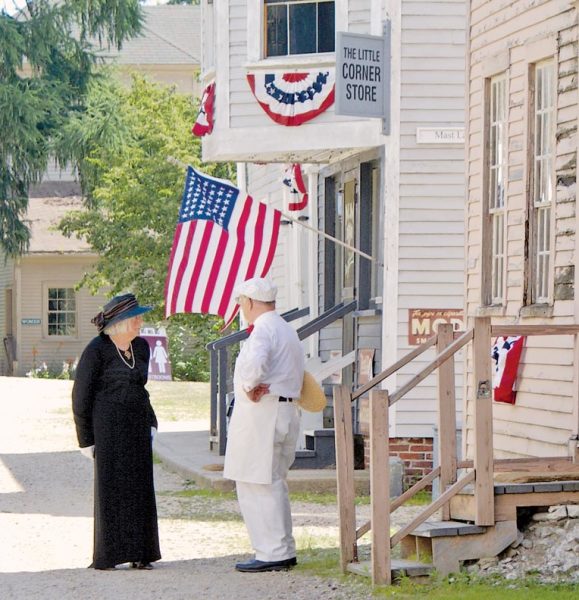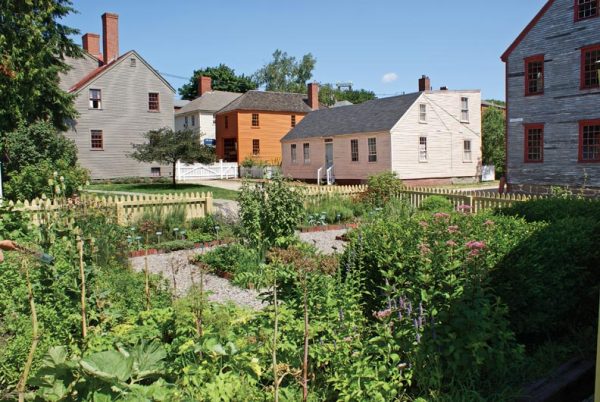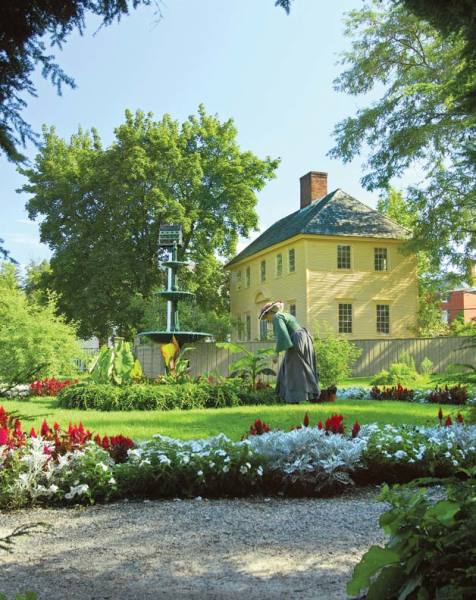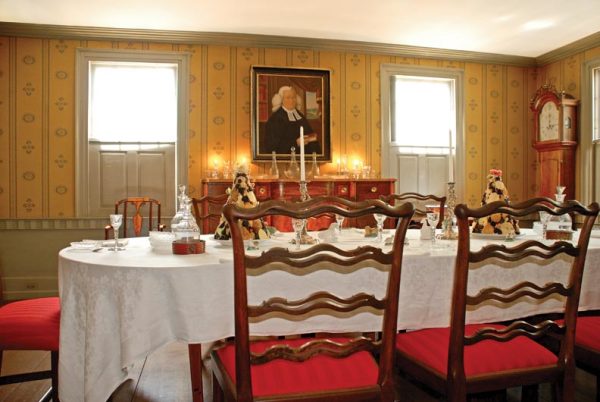
The patriotic Little Corner Store represents a more recent period: rationing during World War II.
Strawbery Banke may be unique among living history museums: Instead of surviving by virtue of a rural or remote location, this 10-acre National Register site is in the heart of a historic downtown—it’s part of the urban fabric of Portsmouth, New Hampshire. A lucky few even get to live in restored houses here.
Named for the berries the first British settlers found here in 1630, Strawbery Banke was continuously occupied for 375 years. By the 18th century, the site was a thriving waterfront community, shipping lumber, fish, and agricultural products across the Atlantic; by the 1900s, it had become a neighborhood where more than half the residents were immigrants. When it was threatened by urban renewal in the 1950s, a local movement saw the conversion of the area to an outdoor museum.
Since then, more than 40 structures have been authentically restored. Most stand on their original foundations, lining streets as narrow as eight feet wide. The neighborhood is clustered around a former waterway known as the Puddle Dock, filled in around 1900 and now open space.

Historic houses and the teaching garden, a medicinal and culinary herb garden.
Because this was still a living community as recently as the 1950s, a remarkable amount of original fabric remains. Archaeological excavations and architectural analysis have uncovered secrets that shed light on the social habits of community members, from wealthy shop owners to immigrant laborers, women, and enslaved and free people of African descent.

Behind an interpreter in one of Strawbery Banke’s many historic gardens is an 1814–16 house that once belonged to Daniel Webster.
Many of the restored houses are furnished as though the family had just gone out for a stroll. At the Capt. John Wheelwright house, engage your senses in an interactive exhibit where you can smell spices and teas, pick up the dinnerware, and touch the furniture in this house interpreted to 1785. Although the Shapiro House was well over a century old when a Russian Jewish immigrant family bought it in 1909, it is furnished as it was when Abraham and Sarah Shapiro lived here and kept kosher.
Whenever possible, items known to have been made by local artisans or that can be traced to specific people are added to the museum’s holdings. For example, Portsmouth was a center of fine cabinetmaking in the late 18th and early 19th centuries: The collection includes chairs attributed to the shops of Langley Boardman and George Gains, as well as John Melcher, and sophisticated case furniture displaying a panel of figured veneer in its base or skirt, a Portsmouth hallmark.

The dining room at the Samuel Chase House (circa 1762) contains examples of Portsmouth-made furniture.
Strawbery Banke has been recognized as one of only four sites in the world that teach about change over time in the landscape. Herbs, vegetables, and fruits grown in the gardens enjoy star turns in the museum’s Historic Foodways program, where culinary history interpreters cook period dishes on a daily basis.
Strawbery Banke Museum is open for tours daily from May 1 through Oct. 1, and also offers hands-on activities year round. 14 Hancock St., Portsmouth, NH, (603) 443-1100, strawberybanke.org







